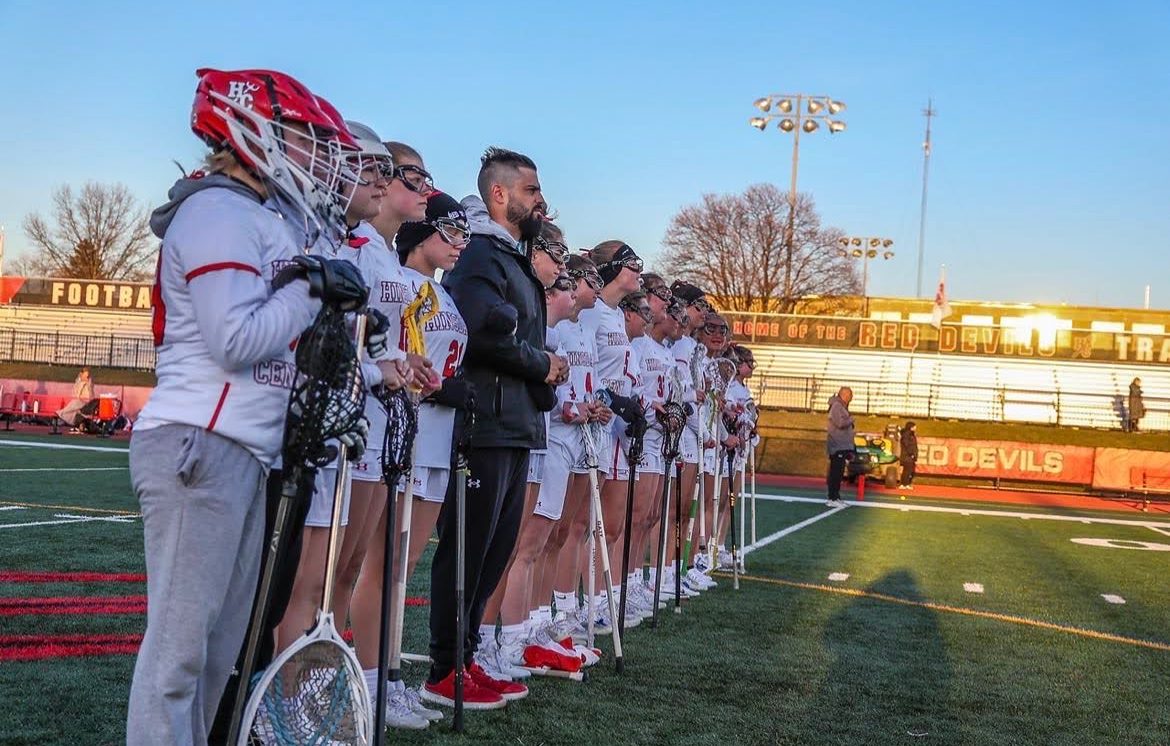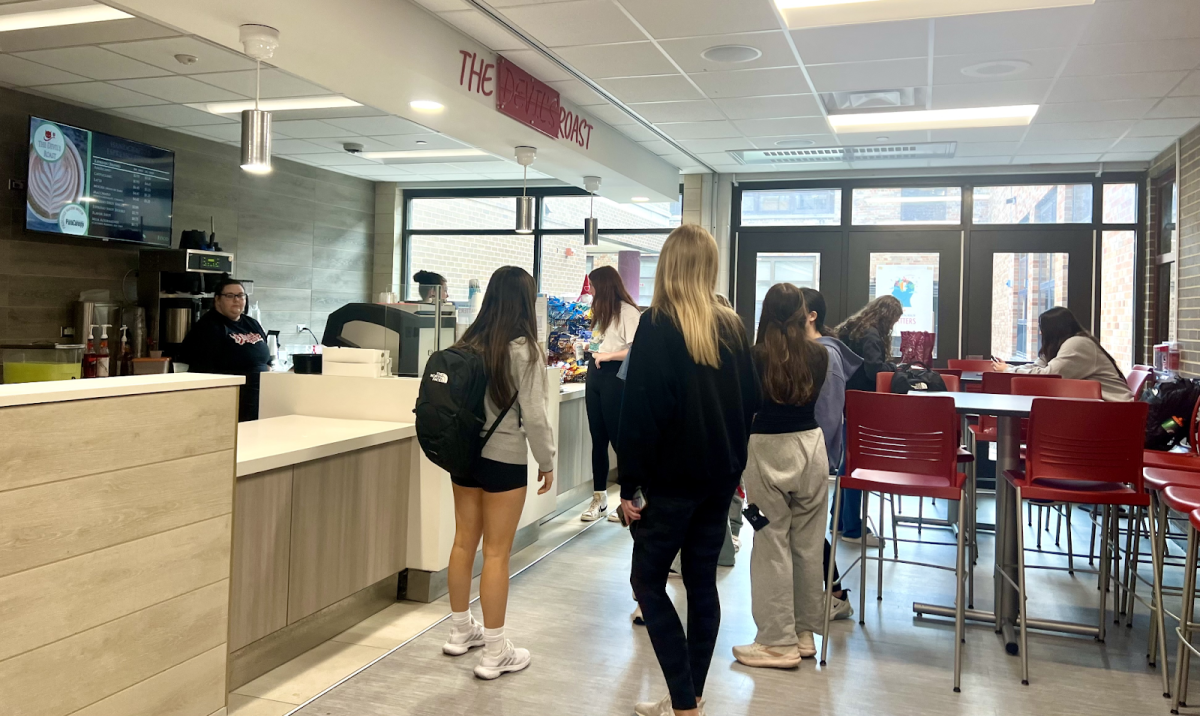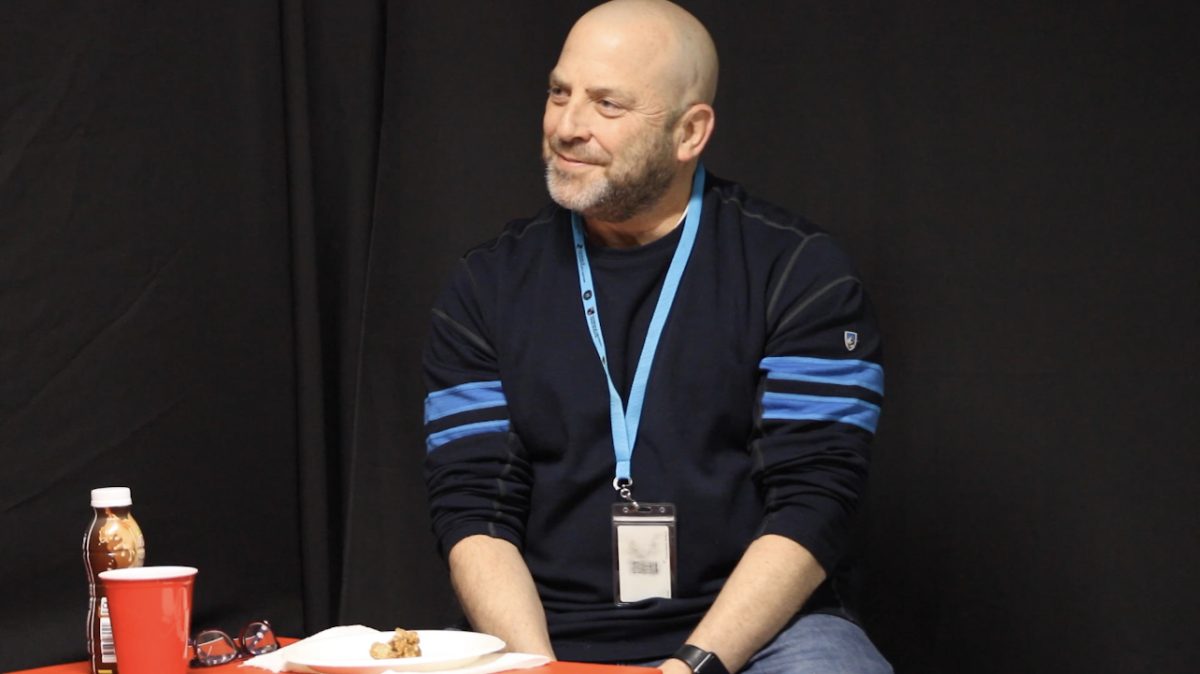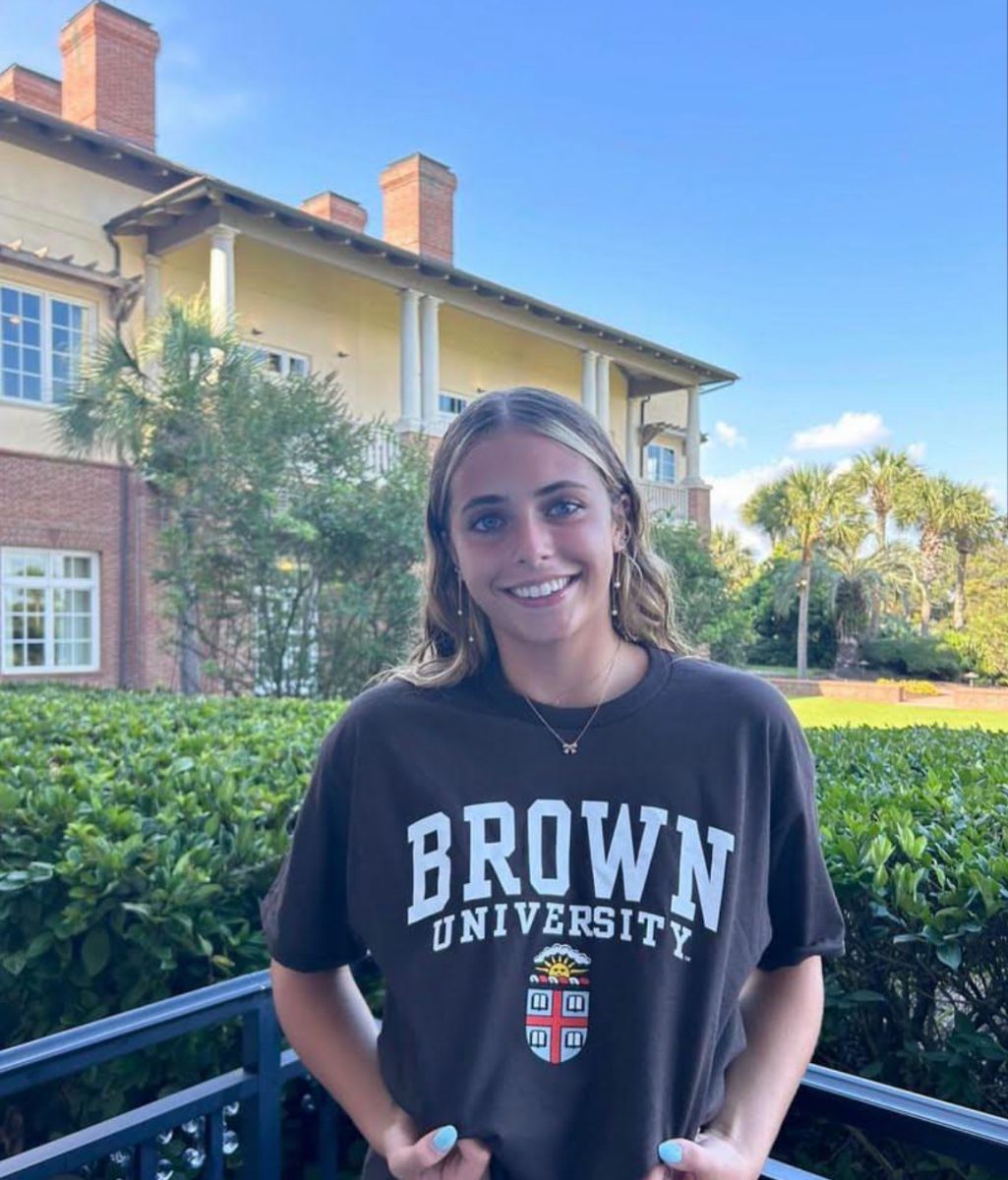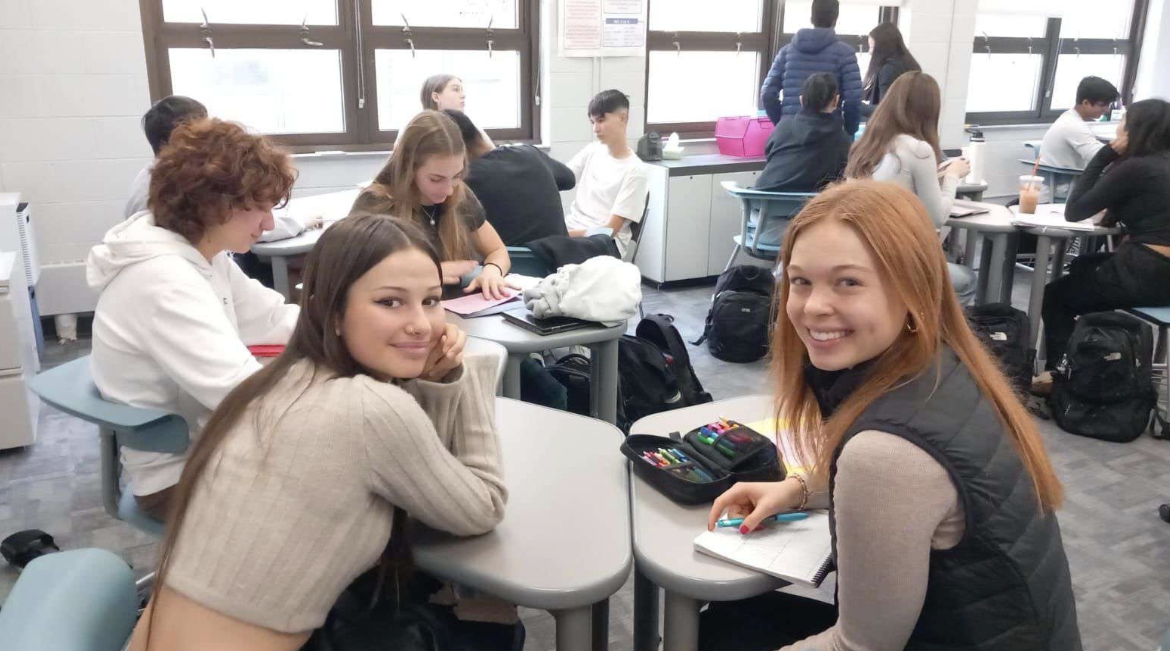Thanksgiving is usually a time for two things: family and turkey—unless, of course, you are an Irish dancer. In that case, practice starts at five in the evening, and by the time it ends, hopefully there is still turkey left. As with any sport, incredibly large sacrifices must be made to reach an elite level, but for those who do make the commitment, the light at the end of the tunnel is a trip to Belfast, Ireland for the world competition.
Central will be represented by three students for the individual competition in Belfast this April. Senior Katelyn Dunn, Juniors Emily Russell and Claire Sullivan, and Freshmen Caitlin O’Rourke and sisters Mary Kate McCarthy and Meghan McCarthy, all qualified out of the Oireacthas competition, a regional qualifier in which only the top 10% of dancers advance. This year, approximately 150 dancers fought for those 15 spots.
The Oireacthas begins with a hard shoe round of Irish dancing in groups of three (the hard shoe is similar to a tap shoe), and is followed by a soft shoe round (similar to a ballet shoe). Based on evaluations of these rounds, half of the dancers are recalled for a final evaluation. “If you get recalled, you then dance, once again in front of the three judges, but this time all by yourself in your hard shoes so they can hear your rhythm. This is the set round; the round to show off what you’ve got,” said Russell.
Last year, Russell missed qualifying for the world competition by one spot. “Everything about it is just really stressful,” said Russell. Adding to the stress is a point system in which each individual starts with a perfect score, but then receives deductions for the smallest of mistakes. “Irish Dance takes a combination of flexibility, strength, and grace. You are constantly jumping, leaping, and exerting tons of energy while at the same time focusing on keeping your dances neat and elegant,” said Russell. Maintaining that high level of physical exertion and focus on form is what makes retaining that perfect score extremely difficult.
As a result, the sport requires immense preparation. Sullivan’s experiences with Irish Dancing began at age four, and she has remained with the sport for the past 12 years. “We have practice twice a week no matter what time of year it is. Before regionals we had practices on Sunday for six hours. It’s a long day,” said Sullivan. The schedule has limited flexibility, as demonstrated by the Thanksgiving practices.
Russell, Sullivan, Dunn , and the McCarthy’s all take lessons from an Irish dance program taught by sisters Colleen Mulhern Malloy and Eileen Mulhern O’Kane. They participate in the top level of several classes, which includes about twenty students from both the local suburbs and downtown Chicago. “They can push you really hard at times, and it is stressful, but in the end it is worth it,” said Sullivan. Russell has also seen her share of tough lessons in the program. “Sometimes their ‘constructive criticism’ is pretty harsh, but you have to be pretty tough to be an Irish Dancer because you face a lot of rejection and disappointments,” said Russell.
And when it comes to Irish dancing, both Malloy and O’Kane have done more than just teach. O’Kane won the regional title for 11 consecutive years and was twice named the national Irish dance champion. Malloy was a national champion as well as a world medal holder. “My coaches are some of the most talented teachers in the Irish dancing world today,” said Dunn. “They prepare us both physically and mentally for competitions and make sure we never step on stage unprepared. They can be tough on the dancers but it is worth it because only hard work can result in ‘big’ results.”
Russell, Sullivan, and Dunn also participate in other types of dance. All three are on the poms team and as distinct as the two forms of dance are, some overlaps in technique do exist. “The major factor that it helps is my flexibility. Being on the poms team helps me to kick and click my legs over my head, which is what our dance teachers are looking for, flexibility-wise. Poms also helps to make spins and such easier because we work on core and spotting,” said Russell.
For Dunn, Irish dancing is just one aspect of her dance life. “I dance at the American Dance Center 11 hours a week studying ballet, jazz, tap, modern, and contemporary dance,” said Dunn. “I feel that some aspects of Irish dance line up with ballet such as turn out, flexibility, and pointed toes while others like landing flat-footed from jumps in ballet and landing on your toes for Irish dance totally contradict each other.”
During a competition, Irish dancers are evaluated by judges based on several criteria. “The top five things that they are being judged on are rhythm and timing, carriage, feet placement, athleticism, and style. It’s an art form, beyond the technicalities,” said O’Kane. A significant amount of raw strength is necessary for a dancer to complete her steps. “If you are not as strong or athletic, you have a harder time getting through the routine. Like any sport these days, the level of sheer athleticism required has increased,” said O’Kane.
In the weeks leading up to the Oireacthas, the frequency and duration of practices increased significantly. The dancers had practice four to five times per week, for a total of 12 hours. Practices could also go until 11 at night, upsetting a dancer’s usual pattern of school, homework, and sleep. By the sixth hour of a Sunday practice, or when the clock in the studio strikes 11 p.m., Sullivan, Dunn and Russell are exhausted. And as for the difficulty of these practices, Dunn might go as far as to call them back-breaking. “I even fractured my back last year due to the intensity of class,” said Dunn.
But the ultimate payoff is just around the corner. All three individuals will compete in the solo portion of the world competition in Ireland this spring. “The competition will be super tough because it is the top dancers from every region,” said Russell. Russell, Sullivan and Dunn all share a goal of a recall at the world competition. “Our goals are very individual. Some girls just want a recall, and others want to finish in the top 10%. Last year we had two from our program that placed 9th and 10th at worlds individually,” said O’Kane. Only half of the competitors receive a recall, and have the privilege of participating in the awards ceremony.
One of the great benefits of the world competition is the chance to meet dancers from other countries. The most represented countries include the United States, England, Australia, South Africa, Ireland and even Russia. “It’s the best of the best – the best of each region competing for the world championship title,” said O’Kane.
After all of the hard work that has gone into qualifying for a trip to Belfast, Dunn, Sullivan and Russell feel more excitement than anxiety for April. After a decade of training, these three Irish dancers can finally show off the incredible level of performance they have acquired. Looking back on 11 years of work, Russell has no doubts about her decision to remain with the program: “I am so happy that I have stuck with it for so long, because all of your hard work really pays off, and it feels awesome when it does!”



